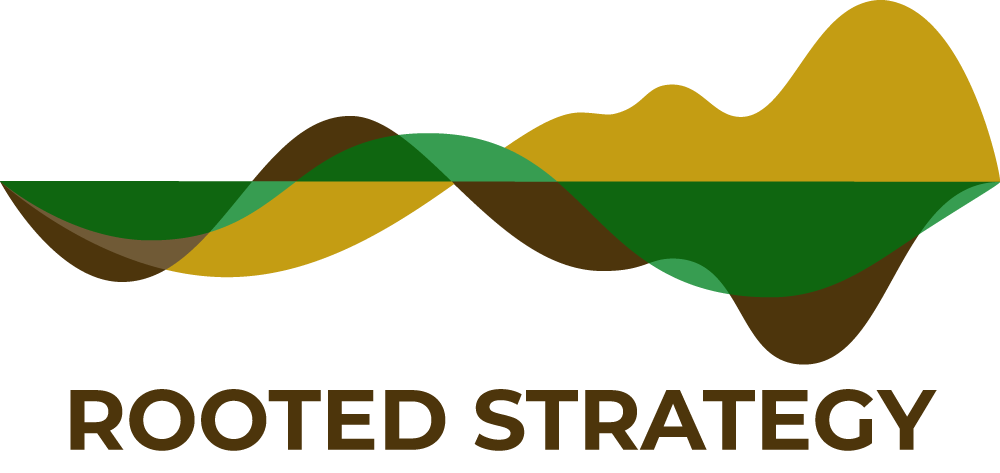The Inner Circle
I’ve been doing community engagement work for many years, so I have certain expectations when I go to a meeting about community engagement. I typically show up to these meetings expecting that everyone is working on one particular issue - early childhood education, or local housing policy, or economic development. I assume that we’ll come come together, do a quick round of introductions (you know, the old “name/job/what you had for breakfast” shortcut), and then dig into a pre-planned agenda with the goal of completing a tangible product or task before the end of the meeting. I expect that the person facilitating the meeting will give us precise instructions and time boundaries, and that (maybe) I’ll get directions for next steps - which is usually another meeting.
But this week, I went to a meeting in Bastrop, TX that challenged my expectations in a powerful way. I was invited to participate in a meeting of “Network Weavers” in Bastrop County - people who are aware of the networks around them and explicitly work to make them healthier and more connected. Network Weavers do this by helping people identify their interests and challenges, connecting people strategically where there’s potential for mutual benefit, and serving as catalysts for self-organizing groups.
At the Bastrop meeting, there was no single issue. There was no group mission statement, and definitely no quick round of introductions (though we did have a “soft start” in which people naturally initiated conversations with one another over coffee). A meeting agenda was posted on the wall but there were no times listed, and no bullet point lists to get through. In Bastrop, I walked into an open space where the primary purpose was to learn and to grow as individuals and a community. We were there to learn how to do the work of building strong networks, and how to do it together in a way that would transform everything we had come to expect about community engagement and systems change.
The space where this transformation begins is what Nexus Community Partners’ Community Engagement Institute calls the Inner Circle of community engagement. Unlike the Outer Circle, which is issue-centered, the Inner Circle is person-centered. It acknowledges that each person who shows up to do community engagement work brings a complex web of deeply-held values, personal and historical traumas, insecurities, beliefs, and dreams right along with them. We cannot skip over that truth - I’m looking at you, "name/job/what you had for breakfast"! We must intentionally focus on making the Inner Circle the starting point and a constant in the bigger picture of equitable community engagement.
Completely unexpectedly, I left Bastrop, TX with a new set of expectations about community engagement.
So, what does Inner Circle work require?
Inner Circle work requires space. Facilitator Krisitn Johnstad masterfully created and maintained a space for relationships, power, healing, identity, history, culture, and trust to emerge among the Network Weavers. She provided a flexible framework for participants; rather than asking them to adapt to an agenda or singular purpose, we adapted our time together to meet the needs of the people in the room. She modeled reciprocity and equity by encouraging participants to self-organize; we had the power to decide what to discuss, with whom, and for how long. I had some of the most powerful and insightful conversations of my career with people I’d only just met because we were given permission to direct our attention to the places that most needed it.
Inner Circle work requires time. One of the conversations from Bastrop that will stick with me for a long time began with this question: “Why is it so hard to do the relationship part of community engagement?” What a great question! It is hard, and not just because it asks us for vulnerability, openness, and authenticity. It’s hard because it takes time, and so many of the issues that we are trying to influence through community engagement are extremely urgent. And yet, what we gain in the Inner Circle provides a solid foundation for the hard work that we must do together to address the great challenges of our time.
Inner Circle work requires resources. I am so grateful to philanthropic partners like the St. David’s Foundation for understanding that Inner Circle work is vital not only to achieving desired social, health, and economic outcomes, but also to achieving equity. Inner Circle work might not follow the rules of traditional philanthropy, but it's still a solid investment that can be evaluated, as we have seen over and over again in studies on resilience in relation to human connection. My hope is that more funders begin to invest resources in the Inner Circle so that community engagement efforts have strong enough roots to transform systems and improve the lives of people.
As we work together on behalf of the people we love to make our communities healthier and more resilient, let’s all challenge ourselves to not go straight to the issue, or the strategy, or the process. Let’s challenge ourselves to breathe, learn, ask questions, take risks, challenge assumptions, be vulnerable and open, and to sit in the dynamic tension of the Inner Circle. We have a lot of work to do together. Let’s take care of one another.

